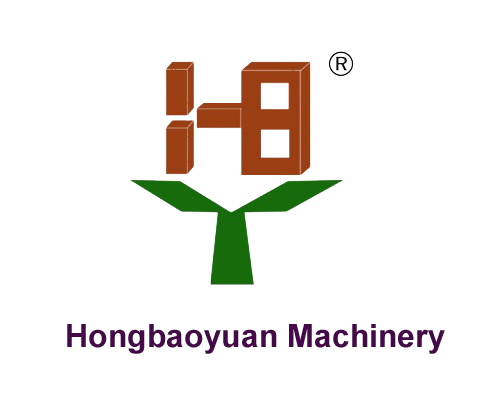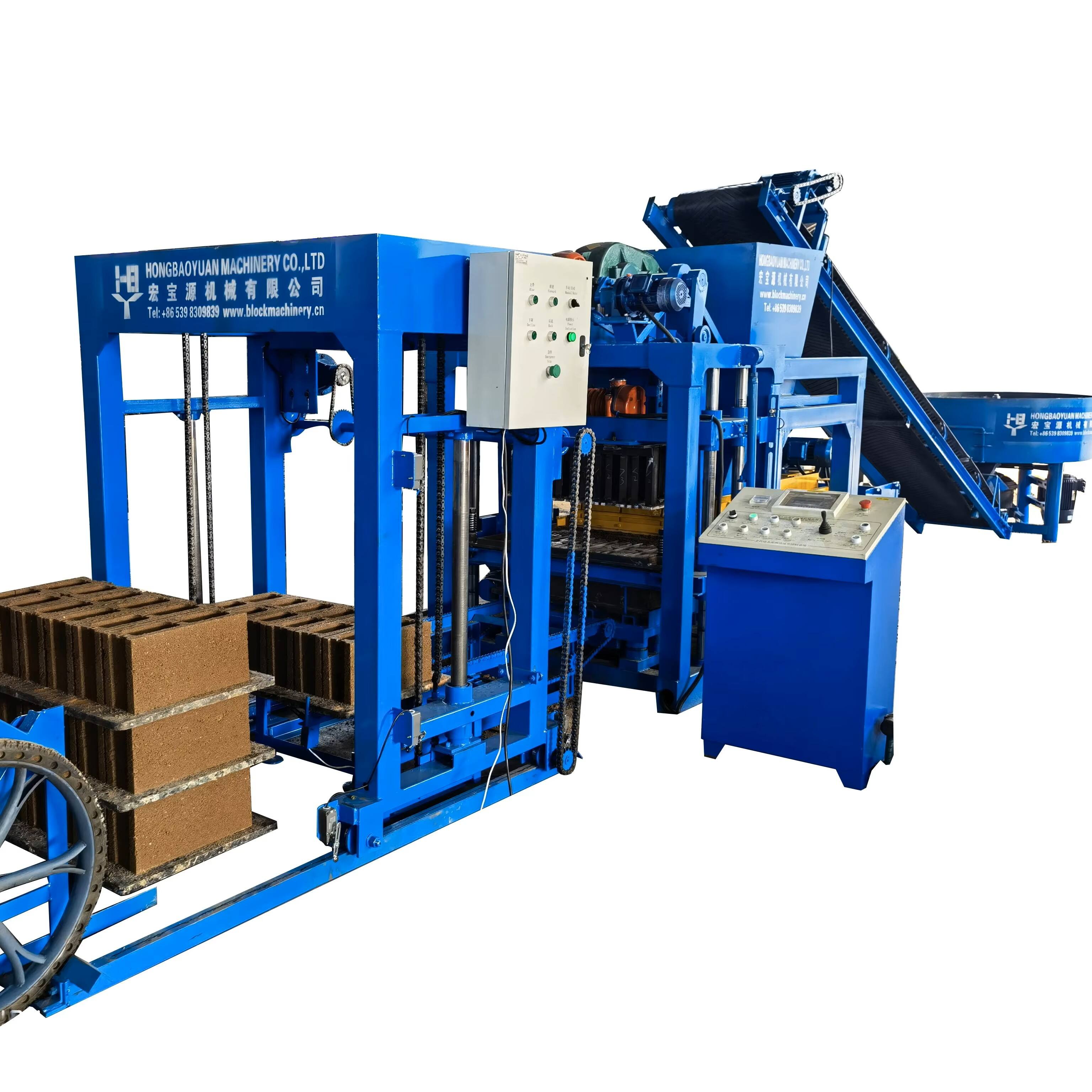Boosting Production Speed and Output with Automatic Block Machines
How Automatic Block Machines Achieve High-Speed Production in Modern Manufacturing
Block making equipment has completely changed how production works when it brings together hydraulic accuracy and programmable control systems. These machines can crank out over 1500 blocks every hour because they handle materials automatically, apply pressure at around 5000 psi during compaction, and have fast curing processes built in. According to research done last year by one major manufacturer, facilities using automation make roughly 18 times as many blocks each day compared to traditional hand methods. The reason? They run nonstop all week long without needing breaks for maintenance or worker shifts changes.
Scalability of Output for Large-Scale Construction Projects
Automatic block machines handle scaling much better than those old school manual setups that rely so heavily on workers. When contractors want to boost production, they just need to throw in some extra parallel units. Output jumps from around 10k blocks daily right up to over 100k without needing all sorts of additional staff. The real kicker? Major infrastructure jobs like building dams often need somewhere near 2.3 million blocks at one location alone. That figure comes straight from the Global Infrastructure Report released back in 2023, though nobody really talks about it much these days despite how relevant it remains for large scale construction efforts worldwide.
Measuring Production Capacity: Automatic vs. Manual Block Making Methods
A comparative analysis highlights the efficiency gap between automated and manual methods:
| Method | Blocks/Hour | Labor Needed | Error Rate |
|---|---|---|---|
| Automatic | 1,200–1,800 | 2–3 operators | 0.8% |
| Manual | 60–100 | 8–12 workers | 12.7% |
Automation reduces material waste by 34% through precise vibration control (Ponemon 2023) and eliminates human measurement errors, significantly improving yield and consistency.
Daily Time Savings and Operational Efficiency Gains From Automation
Smart maintenance systems in modern automatic block machines reduce unscheduled downtime by 31% via real-time component monitoring. Operators save 3–4 hours per day due to automated stacking and palletizing, eliminating repetitive manual handling. This efficiency allows teams to redirect labor toward quality assurance and logistics, enhancing overall operational productivity.
Ensuring Precision, Consistency, and Quality in Block Manufacturing
Achieving dimensional accuracy and uniformity with automatic block machines
Today's automated block production equipment keeps dimensions pretty consistent throughout entire batches, staying within about plus or minus 1 millimeter. That kind of tight control really matters when it comes to how strong the final structures turn out. Most modern plants use advanced PLC controls that watch over mold positioning and track how much the machine vibrates during operation. These systems help achieve around 98 percent uniform density in the finished concrete blocks. The difference compared to older techniques is night and day. Traditional methods often needed lots of fixing up later on because measurements varied so much between blocks. When dimensions drift beyond 3 mm from what they should be, both the fit between blocks and overall safety standards get compromised.
Advanced compaction technology for improved block strength and quality
High-frequency vibration systems combined with 20 MPa hydraulic pressure deliver optimal compaction, resulting in blocks with 15–20% higher compressive strength than those made manually. Servo-controlled feeding ensures even material distribution, while automated curing chambers maintain tight environmental control (±2°C temperature, ±5% RH humidity), promoting consistent hardening and durability.
Minimizing waste and rework through consistent automated production
Quality control systems that are automated can cut down on wasted materials by around 27%. They do this by making instant changes to things like mix ratios and how much pressure is applied during compaction. Research from 2023 shows these automated setups produce fewer than 3.4 defective items for every million made, which is way better than what happens when people handle the process manually where we see between 12 and 18 flaws for every thousand units produced. The difference matters because projects get held up far less often when working with high quality blocks. Companies report seeing almost all their delays disappear once they switch to automated systems for checking product standards.
Reducing Costs and Material Waste Through Automation
Precision engineering in automatic block machines reduces material overuse
Computerized measurement systems dispense raw materials with 99.5% accuracy (VDL Steelweld 2023), eliminating estimation errors responsible for 12–18% waste in manual setups. Vibration-compaction technology optimizes density with minimal cement use, avoiding over-engineering while meeting ISO 9001 standards.
Lower labor costs and reduced dependency on manual workforce
Automation reduces labor needs by 60–75%. A single operator can manage multiple machines via centralized control panels, lowering wage expenses and minimizing human error. In regions with rising minimum wages, this model delivers significant savings—manufacturers using automated systems report 34% lower payroll costs (CCR Magazine 2023).
Long-term ROI and cost efficiency of investing in automatic block making systems
Although automatic block machines require a 25–40% higher initial investment, they typically deliver ROI within 18–30 months through:
- 55–70% reduction in material waste costs
- 80–90% lower defect and rework rates
- 24/7 production capability without shift constraints
Industry analyses show automated plants generate 22% higher profit margins over five years compared to manual operations, with annual maintenance costs staying below 3% of total production expenses.
Streamlining Operational Workflow in Concrete Block Production
Seamless integration of automatic block machines into existing production lines
Automatic block machines these days fit right into existing production lines without causing major disruptions, mainly because they're designed with workflow optimization in mind. According to some recent research from the lean manufacturing world back in 2023, factories managed to slash material handling time somewhere between 15 and 30 percent when they positioned their equipment properly relative to where materials are stored and cured. Putting these machines close to where raw materials come in makes a real difference too. One factory actually saw their production cycle speed up around 20% after relocating their block machine next to the incoming materials area, something that plant managers have since started adopting across multiple sites.
User-friendly operation and training efficiency in automated environments
Control panels that are easy to use let operators get comfortable with basic operations within around 40 hours, which is about 65 percent quicker compared to learning manual systems from scratch. The system comes with preset settings for size specifications and curing conditions that help avoid mistakes during setup, plus it has built-in diagnostic tools that save roughly half the time spent fixing problems. Because workers spend less time wrestling with equipment, businesses can move nearly three quarters of their staff over to jobs that actually matter, such as checking product quality or managing supply chains. This shift means better utilization of both people skills and machinery capabilities across the board.
FAQ Section
What is the main advantage of using automatic block machines over manual block making methods?
Automatic block machines significantly enhance production speed and efficiency. They produce 18 times more blocks daily than manual methods and reduce labor costs by up to 75% through automation.
How does automation reduce material waste in block manufacturing?
Automatic block machines use precise vibration control and computerized measurement systems to dispense raw materials with high accuracy, reducing material waste by up to 34% compared to manual setups.
Are automatic block machines suitable for large-scale construction projects?
Yes, they are highly scalable and can increase output significantly for major infrastructure projects, making them ideal for large-scale construction efforts.

